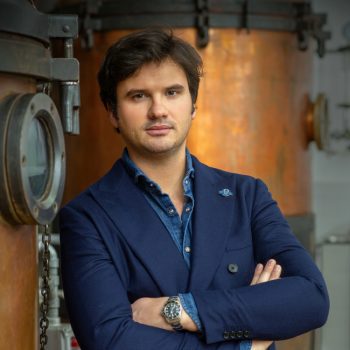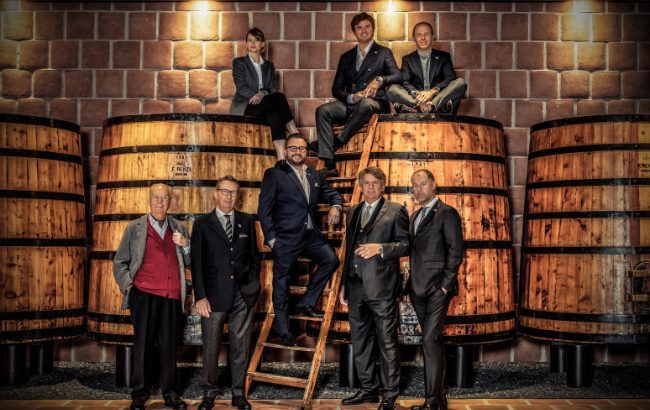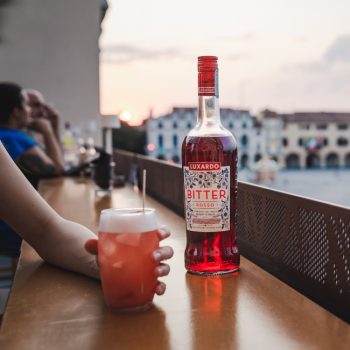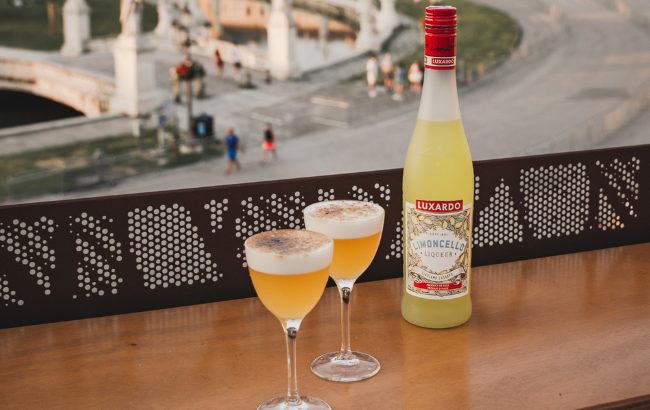Why bartenders keep turning to Luxardo
By Georgie CollinsNicolò Luxardo, export director of his family’s eponymous Italian liqueur brand, shares how the company has continued to keep ahead of trends while staying true to its 204-year-old legacy.

As the seventh-generation family member of Luxardo, Nicolò joined the family business more than a decade ago to support the company’s export management alongside his cousin, Matteo.
He is one of eight members of the family actively working in the business today. “There is still one member of the fifth generation, five members of the sixth generation, and two members of the seventh, which are my sister and myself,” he tells The Spirits Business. “And each one of us has a strategic role within the company.”
Nicolò’s role sees him look after the central map of the globe, from the Nordics down to South Africa, while Matteo takes care of the Canadian, American and South American markets, as well as Asia.
“A large part of our job,” he explains, “is meeting with all of our distributors and importers, attending major industry events, and going to check out all the different markets that we actually work with, because we export in over 104 different countries.”
Of Luxardo’s global reach, Nicolò notes that continental Europe has been one of the most significant markets for the company. “The UK has been a focus market for us for a very long time, and has always been a strategic market for us, so it’s definitely my biggest focus,” he says.
“Other markets that are giving us satisfaction and good results are the likes of Greece; all the Eastern European countries where we have a big focus; Nordic countries are performing very well.”
In terms of volume, he notes that these markets are “not as big” as the “major” countries, such as the US, which wins on account of its physical size, “but they are developing in a fast and very consistent way.”

Cocktail-driven growth
The rise of cocktail culture, and the coinciding Covid-19 pandemic, both had significant positive impacts on Luxardo.
Following the pandemic, Nicolò says Luxardo experienced a strong bounce back, with every year post-Covid being a record year for the company, and current growth ahead of expectations. However, he shares that this growth had already begun before the pandemic, and was only temporarily halted before momentum was regained. “The [cocktail] trend has been there since the early 2000s, and if you look at our development, it has been casting growth since around 2013 to 2015, so it’s been a very, very good decade for us.”
The popularity of cocktails and the subsequent changing consumption patterns of consumers have led to notable market expansion for the brand. “Even countries that are late adapters of these new trends have now reached a very good level, and so there is a big demand for products like ours, and there has been quite a big development over the last five to seven years.”
To continue to tap into the ongoing rise of cocktail culture, Luxardo has employed a multi-pronged strategy to engage with bartenders and mixologists globally.
Nicolò explains that the company has a global brand ambassador, Gareth Franklin, otherwise known as Mr G, who is based in London but travels extensively in a bid to maintain direct contact with bartenders worldwide – a role he has had for more than 13 years.
The brand also organises frequent masterclasses, bartending competitions, and guest shifts in major cities.
Nicolò explains that Luxardo makes a point to actively listen to the bartender community, sometimes developing products in response to feedback and emerging trends observed through direct engagement.

“Back in 2015, my cousin and I were traveling around the US, and we saw that more and more bartenders were trying to do twists on Negronis – trying to make their own variations – and one of the biggest trends at that moment was trying to recreate the perfect White Negroni.
“Everybody was trying to recreate the bitter taste of a regular red bitter by using different products, but there wasn’t a white bitter available. So we came back [to Italy] and we did some studies, and we saw that we had a recipe from the 1800s that was for a white bitter. And so in 2016, we came out with our Bitter Bianco. That was the result of us being so immersed in the bartending community and trying to hear their needs. It didn’t come out from the numbers. You know, you couldn’t get this request out from a survey or stuff like that. It was only speaking to the bartenders and to the bartending community that this need came out.”
A continuation of strategy is Luxardo’s hosting of bartenders at its Italian headquarters, which in turn enables them to experience the product processes firsthand, and provide specialised training on product use. He says they do this because “our products, most of the time, are not very easy to understand.” He uses the brand’s best-known product, the Maraschino liqueur, made with marasca cherries, as an example. “With the Maraschino, for example, you start thinking about cherries, but it is very different from a cherry liqueur. It’s so much more complex – it’s more of a herbal liqueur, I would say, rather than a cherry liqueur. And when people come over here and we actually show them and take them through the production process, they actually understand. So we have at least 20 groups of people coming over every single year from different parts of the world to visit our premises, so we try and be very relevant for them.”
Eyes on trends
Having a finger on the pulse of trends is vital for the continued growth of the Luxardo brand, and Nicolò explains that they’re always keeping an eye on what could be the ‘next big thing’ in cocktails to see how they could adapt recipes from the Luxardo archives, or innovate to stay ahead of the curve.
“There are many trends that people are talking about. One of the most interesting and the one that I actually see the most is the rise of low-ABV drinks.”
He charts the development of the cocktail movement back to the 1990s, when he says long drinks were in vogue. This followed the emergence of ‘modern mixology’, when it was more about “stirred down and brown, very boozy drinks”.
“Now, I think that people are enjoying a bit more low-ABV drinks, and this opens up a lot of opportunities for our core range of liqueurs. I think that this is the right time for liqueurs to come back in trend, not that they haven’t been, but in the last 10 or 20 years, there was a lot of importance being given to the base spirit, but now in the coming years I think liqueurs could become more well treated, so lower-ABV drinks is definitely a trend that we’re very interested in and we’re trying to be ahead of – you know, play the right game.”

While being malleable to incoming drinks trends is important to the firm, Nicolò is aware that there must be a limit to the brand’s innovation if it is to stay true to its heritage as it embarks on its third century in operation.
He explains the company strictly maintains traditional production methods, such as using the original 204-year-old Maraschino process, to preserve authenticity and quality, even when more efficient options exist, while at the same time investing in the latest technology for their production lines, which allows them to increase efficiency, keep costs aligned, and scale up as their brand grows. This dual focus enables Luxardo to honour its heritage while remaining adaptable to changing market trends and consumer preferences.
However, one of the key strategies Luxardo has with its portfolio is ensuring it has a presence in all countries.
Of the brand’s core portfolio, the original Maraschino cherries have a very wide distribution, and in terms of volume, are also used as an anchor in certain markets. But, he explains, the brand has noted certain markets have seen successes for different products. The limoncello, he says, has been “a star product in the last three to four years, and has had significant growth across all major markets,” while in other markets, especially Eastern European countries, “our aperitivo has had a huge development over the last decade.”
Other products that have seen increased growth in recent years include Del Santo, a “very traditional herbal liqueur” that will be soon launched in the UK, as well as the espresso liqueur, which, thanks to the popularity of Espresso Martinis, “has been getting more and more traction in mostly all of the markets where we have a good presence. These are the two products where we are seeing a good growth, and that we actually foresee a good development in the coming years.”
Related news
Liqueurs: innovation and adaptability spearhead success
